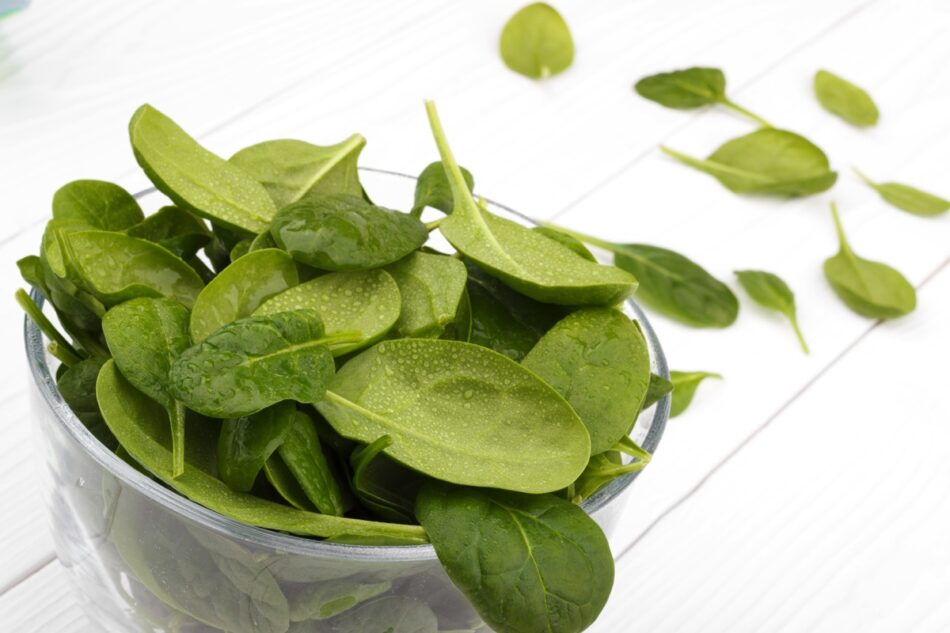Who doesn’t like delicious spinach with garlic and cheese?
Freezing spinach is a great idea to keep these leaves fresh for a long time and use them when colder days come.
Would you like to learn how to freeze spinach so that it remains fresh and crisp for the days to come? Check out our guide!
Learn how to freeze spinach so that it’s always fresh and on hand when you need it to prep some dinner or snacks for a family gathering.
Prepping spinach for freezing
Spinach is a green annual vegetable that is a perfect addition to the main course. It can be eaten fresh or treated with hot water.
Raw spinach is a great base for fresh salads, for example with chicken in herbs or feta cheese. Spinach can also be blended and used in soups or baked in puff pastry. There are multiple ways you can use it!
Spinach is mostly appreciated for its mild taste and the multitude of nutrients and vitamins it’s packed with.
Before you decide to freeze some spinach, pick out the nicest leaves. If your spinach looks off before freezing (black spots on the leaves, slightly rotten edges), you can be sure it’s going to be much worse after thawing in a couple of months. So get rid of all the leaves that don’t look fresh anymore.
Always choose fresh, impeccable leaves for freezing.
To prep your spinach well, make sure you wash and dry it carefully (you can use paper towels or a strainer to dry the leaves). Place it in a ziplock bag or a freezing container when ready.
Spinach leaves must be washed well before freezing
You need to get rid of the dirt and dust, otherwise all the unwanted particles will stick to the leaves during freezing. As it’s impossible to remove them from frozen leaves, you’ll end up eating them!
That’s why you have to wash it really well beforehand.
If you care about the shape of your leaves and don’t want them to glue to each other, you can pre-freeze them separated nicely on a board first. Once done, place the leaves in a bag.
The drier the spinach, the smaller the chance of the leaves clumping up and forming a mass!
How to freeze spinach properly
In an ideal scenario, you should put your spinach in a refrigerator for a couple of hours before freezing it. The process will give you the best results and the leaves will remain fresh for longer.
You should also remember to dry your spinach well and place it on a paper towel. The drier the leaves, the better the taste after thawing, so make sure the leaves are as dry as possible. That will ensure a great result and you’ll avoid unpleasant surprises.
Once cooled, you can place your spinach in your freezer. Some freezers come with Fast Freeze containers – if you use them, your products will be frozen faster. If you happen to have them available, it’s best to place your spinach there.
And most importantly…
If your spinach happens to thaw (because of an equipment failure or power outage) you can’t freeze it back. This rule applies to all frozen fruits and vegetables. If it happens to you, you have to use the products immediately or cook them – you have one day to do that.
Thawing spinach
If prepped and frozen properly, spinach can be kept in your freezer for up to 12 months.
Try to use it during that year you have. Although, to be frank, I personally keep my frozen food for longer and it’s still perfectly fine. The results depend on the shape the leaves were in before freezing, and on the conditions they are being frozen in.
People often forget that the process of thawing is much more important than freezing itself. It’s possible to spoil a perfectly fine frozen product through improper thawing, so make sure to check out the section below.
Spinach is very delicate when it comes to thawing.
If you want to use it in a salad or, generally have it in a raw form, make sure you thaw it long and slow – in a refrigerator. If you expose it to a temperature that’s too high, it’s going to lose its crispness and will turn mushy. Which is not the most desirable texture.
But if you intend to roast or cook it, you can place frozen leaves directly in a pan or a pot. There’s nothing that should stop you from doing that – it will become soft quickly.
Last but not least: remember that it’s not recommended to thaw your spinach in a microwave! The leaves are going to lose most of the vitamins and texture and will be considerably softer.

